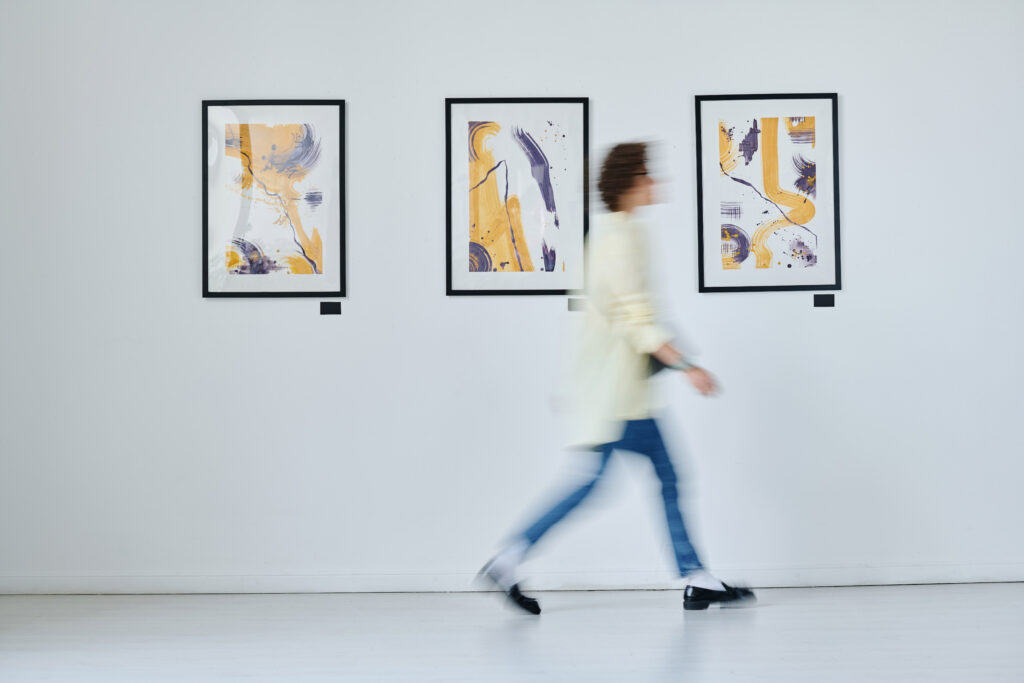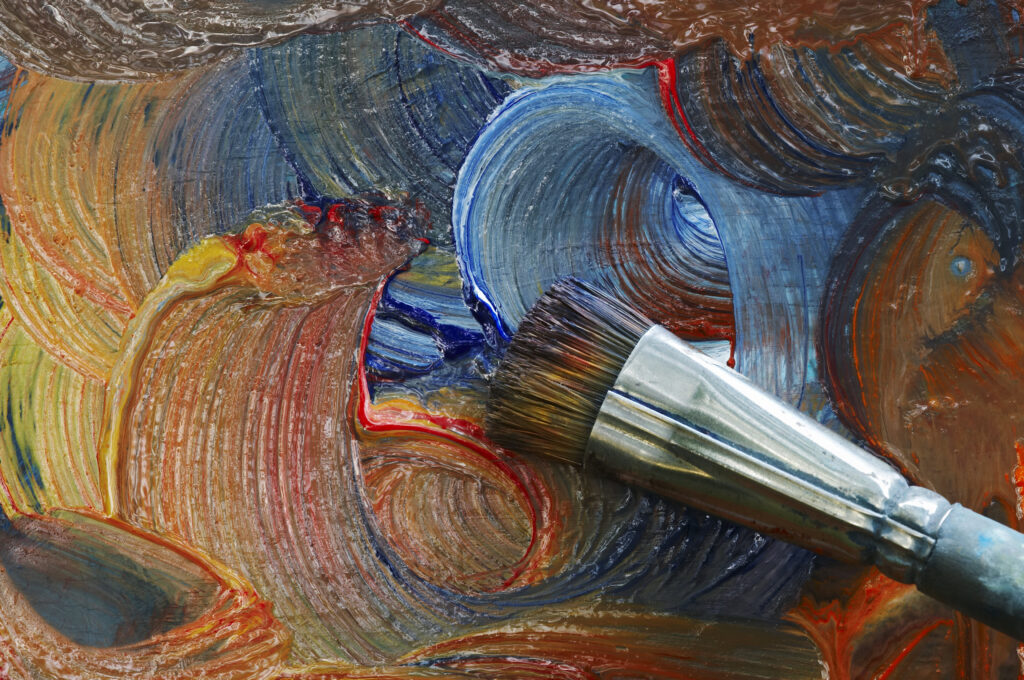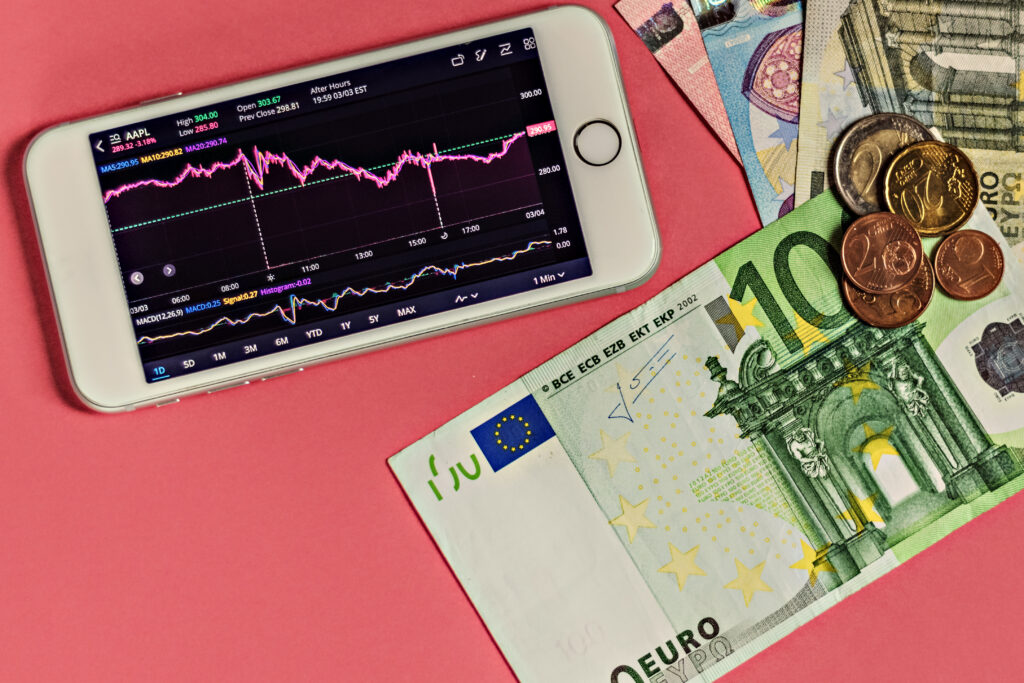Forex Market Dynamics and the Global Art Trade: An Unconventional Connection
In the vast and intricate world of global finance, countless factors shape the movement of currencies and asset prices. Economic data, political events, and monetary policies are often considered the most influential forces in forex. Yet, there exists an unconventional but fascinating connection—the global art trade.
High-value art is not only a cultural treasure but also a financial instrument. When billion-dollar artworks are bought or sold, the transactions often cross borders, leading to significant capital flows. For instance, when an American collector purchases a European masterpiece, large sums of dollars are converted into euros, influencing short-term currency demand. Similarly, auctions in New York, London, or Hong Kong generate international transfers that ripple through forex markets.
Art also functions as a store of value during times of uncertainty. In volatile markets, investors often diversify into tangible assets like fine art. This shift impacts currency flows, as wealthy buyers move money across borders to secure rare pieces. Consequently, art transactions can indirectly mirror trends in currency strength, capital mobility, and global wealth distribution.
While not a mainstream driver of forex dynamics, the art trade highlights the multifaceted nature of financial markets. It reveals how culture, wealth, and economics intersect in unexpected ways. Traders who recognise these unconventional influences gain a broader perspective of global liquidity and currency movement.
In essence, the global art trade underscores the fact that forex markets are shaped by more than numbers and policies—they are also influenced by human behaviour, wealth shifts, and the timeless pursuit of art.
The Global Art Trade: A Multibillion-Dollar Behemoth
Before delving deeper into the intricate interplay between art and forex, it’s essential to grasp the sheer magnitude of the global art trade. Art has always been a symbol of opulence and prestige, and the market for fine art continues to expand relentlessly. According to The Art Basel and UBS Global Art Market Report 2021, the global art market soared to an astounding $50.1 billion in 2020, even amidst the formidable challenges posed by the COVID-19 pandemic.
The art trade encompasses a diverse array of segments, each with its unique dynamics. These include high-profile auctions, prestigious galleries, discreet private sales, and bustling art fairs. In these arenas, high-value art pieces often serve dual roles as both aesthetic masterpieces and lucrative investments, facilitating substantial financial transactions.

Art Auctions: Economic Barometers
Art auctions, in particular, emerge as intriguing economic barometers within the art world. These events, hosted by renowned houses like Sotheby’s and Christie’s, routinely witness the exchange of rare and valuable artworks at staggering prices. But their significance extends beyond art aficionados; art auctions have the power to broadcast vital economic signals.
Auction Results as Economic Indicators
The prices achieved at art auctions can offer invaluable insights into the state of the global economy. When high-value art pieces fetch record-breaking sums, it sends a powerful message—a vote of confidence in the economy. Collectors and investors willingly pour substantial sums into these acquisitions, reflecting their trust in the financial system. Conversely, a downturn in the art market can cast shadows of uncertainty over the economy, prompting reactions in the forex market.
To illustrate this, let’s revisit the sale of Leonardo da Vinci’s “Salvator Mundi” for a staggering $450 million in 2017. The astronomical price tag made headlines worldwide, serving as a resounding testament to the strength of the global economy. Investors took note, seeking refuge in the stability of the United States, causing a surge in the value of the US dollar against other currencies.
Currency Fluctuations Before Auctions
The anticipation of art auctions unveils another layer of the art-forex nexus. Art auctions are meticulously planned affairs, often announced months in advance. As the event approaches, collectors and investors from around the globe rally their resources and prepare for participation. This surge in demand for foreign currencies in the lead-up to auctions can spark fluctuations in exchange rates.
Read our article on Global Fashion Industry
Currency Fluctuations Before Auctions
Consider a major art auction scheduled in London. Buyers from the United States who intend to participate may preemptively convert their US dollars into British pounds, ensuring they are well-equipped for bidding wars. In the process, they inadvertently drive up the demand for pounds, temporarily bolstering its value. Conversely, sellers in the UK who anticipate receiving payments in dollars may opt to exchange their pounds in advance, potentially causing a temporary depreciation of the currency against the dollar.
These exchange rate fluctuations, driven by the anticipation of art auctions, can have a tangible and immediate impact on forex markets, especially for the currencies directly involved in the transactions.
Galleries: Catalysts of Global Art Transactions
While art auctions take the spotlight, art galleries serve as indispensable players in the art trade ecosystem. Galleries act as intermediaries, representing artists and connecting them with eager buyers. Their activities, both domestic and international, have a direct bearing on forex markets.
International Art Exhibitions
Galleries frequently participate in international art exhibitions, presenting their artists’ works on a grand global stage. These events act as magnetic hubs, attracting international collectors and investors, thus creating a vibrant marketplace for art. As international buyers make their acquisitions, the need for currency transactions becomes paramount, thereby influencing forex markets.
Imagine a gallery in New York representing an emerging artist whose work suddenly gains immense popularity in Europe. As European connoisseurs enthusiastically purchase the artist’s pieces, they must convert their euros into US dollars to facilitate the transactions. This surging demand for dollars can result in a strengthening of the US dollar against the euro in the forex market, underscoring how art transactions can sway exchange rates.
Promoting Emerging Markets
Galleries also play a pivotal role in nurturing and promoting emerging art markets. When a gallery effectively champions an artist from a previously overlooked region, it can ignite heightened foreign investment and currency flows into that area.
Take, for instance, the case of Nigerian artist Ben Enwonwu. In 2018, his rediscovered masterpiece “Tutu” set the art world ablaze, commanding a jaw-dropping $1.6 million at auction. This extraordinary sale not only thrust Enwonwu into the global spotlight but also drew international attention to the African art market. Foreign collectors took note, injecting increased investment into the market and subsequently triggering substantial currency exchanges between the Nigerian naira and various global currencies.
The Salvador Dalí Masterpiece
In May 2021, a spectacular event unfolded in the art world that rippled through currency markets. A Salvador Dalí painting titled “Couple aux têtes pleines de nuages” was auctioned for an astonishing $10.6 million. However, what made this transaction particularly noteworthy was the currency in which the buyer chose to pay—British pounds. This decision set in motion a chain reaction that captured the attention of forex traders.
The Pound’s Rise and Forex Reactions
With the buyer opting to pay in British pounds, an influx of foreign currency flowed into the art market, specifically in pounds. This surge in demand for pounds had a noticeable impact on the GBP/USD exchange rate. As the pound gained strength against the US dollar in the wake of the sale, forex traders took notice.
The appreciating pound created a challenging situation for traders who had taken short positions on the pound, essentially betting that the pound would weaken. As the pound strengthened unexpectedly, these traders were compelled to cover their losses by purchasing pounds, which further propelled the currency’s ascent.
This example vividly illustrates how a single art auction can wield substantial influence over forex markets, reshaping currency dynamics and presenting trading opportunities that arise from unexpected currency fluctuations.
Galleries: A Steady Stream of Transactions
While art auctions are high-profile but sporadic events, art galleries contribute to the ongoing flow of art transactions. Galleries, scattered across the globe, showcase an eclectic array of artworks, ranging from pieces by emerging artists to those created by established masters. These galleries are key players in the art market and, interestingly, they can also leave their mark on forex dynamics.

The Impact of a Gallery’s International Success
Let’s consider a hypothetical scenario involving a prestigious gallery in New York City representing a highly sought-after contemporary artist. When this gallery successfully sells one of the artist’s pieces to a wealthy European collector, it triggers a cross-border financial transaction.
In this case, the collector pays for the artwork in euros, leading to a purchase of euros and a corresponding sale of US dollars. Such transactions, especially if they involve substantial sums, can exert noticeable influence on the EUR/USD exchange rate. Forex traders closely monitor these transactions, actively seeking opportunities to profit from the ensuing currency fluctuations.
This continuous flow of transactions initiated by galleries underscores how art sales, even on a smaller scale than major auctions, can impact forex markets. It highlights the interconnectedness between the art world and currency flows, with galleries serving as intermediaries facilitating international art transactions that have direct repercussions on exchange rates.
High-Value Art as a Safe Haven
Art’s role as a store of wealth is a timeless attribute, likened to assets such as gold or real estate. During times of economic uncertainty, market volatility, or currency devaluation, investors often turn to tangible assets like art to safeguard and preserve their capital. This flight to safety can exert a profound impact on forex markets.
Investors seek the stability and potential appreciation that high-value art pieces offer. This influx of capital into the art market often necessitates currency transactions, as individuals convert their assets from vulnerable or devaluing currencies into art assets. These transactions can create substantial currency flows and exert notable influence on exchange rates.
In conclusion, the intersection of the art world and forex markets is a fascinating exploration of how seemingly distinct realms can become interconnected in surprising ways. Art auctions, galleries, and the appeal of high-value art as a store of wealth all contribute to the intricate relationship between art and currencies. This relationship underscores the multifaceted and interconnected nature of the global financial ecosystem, offering investors and traders a unique perspective and potential opportunities within this unconventional but captivating partnership.
The Art Market During a Financial Crisis
The 2008 global financial crisis stands as a stark example of how traditional investments, such as stocks and real estate, experienced severe declines, sending shockwaves through the global economy. In stark contrast, the art market demonstrated a surprising resilience, remaining relatively stable amidst the turmoil. This unexpected stability piqued the interest of investors seeking to safeguard their wealth during turbulent times, leading them to flock to the art market and subsequently influencing currency flows.
A Haven in Troubled Waters
The financial crisis of 2008 brought with it a sense of uncertainty and a loss of confidence in traditional investment avenues. Stocks plummeted, and real estate values tumbled, leaving investors in search of alternative assets to preserve their wealth. During this period, high-value art emerged as an attractive haven.
Investors recognized the potential of art as a store of value that often appreciates over time, even in the face of economic turmoil. This realization led to increased demand for art pieces, resulting in rising prices within the art market. As investors converted their financial assets into art, they encountered the need to acquire the currency of the art market, often leading to the strengthening of that currency.
The Rise of the Swiss Franc
One notable example during the 2008 financial crisis was the Swiss franc (CHF), a currency known for its stability and reliability. As investors sought refuge in art and engaged in substantial art transactions, the Swiss franc became a favored choice for conducting these transactions. The influx of demand for the Swiss franc led to an appreciation of the currency against other major currencies in the forex market.
The Swiss franc’s ascendancy during this period illustrated how art transactions could exert a tangible impact on currency values. This phenomenon reaffirmed the interconnectedness between the art world and forex markets, particularly during times of economic uncertainty.
Art as a Signal of Economic Shifts
High-value art sales often reveal more than cultural preferences—they can provide early clues about the state of the global economy. The behaviour of wealthy collectors, who dominate this market, frequently reflects expectations about financial stability and future growth.
These buyers typically have access to exclusive information, strong networks, and a deep understanding of wealth trends. Their willingness to spend millions on rare works may signal optimism and confidence in the broader economy. On the other hand, a slowdown in art purchases or declining auction prices can suggest uncertainty, reduced liquidity, or an impending market downturn.
Because art is considered both an investment and a store of value, shifts in this sector often align with changing attitudes toward risk. When economies strengthen, demand for prestigious art tends to rise; during turbulent times, transactions may slow as investors adopt caution.
In this way, the art market acts as an unconventional barometer, offering traders, economists, and investors unique insights into upcoming shifts in global financial conditions.
The Informed Investor
Art collectors, often possessing substantial wealth and connections within the financial world, are uniquely positioned to anticipate economic shifts. Their investments in high-value art pieces are not arbitrary; they are calculated decisions that may reflect their confidence or concerns regarding the broader economy.
For example, if a prominent collector with deep ties to the financial industry decides to invest heavily in art during a period of relative economic stability, it may signal optimism about the future. Conversely, if influential collectors start liquidating their art holdings, it can be interpreted as a sign of economic caution.
Art transactions by these informed investors can serve as early indicators of broader economic trends, offering valuable insights to those who closely monitor the art market. Forex traders and investors often pay attention to these signals, as they may provide advance notice of potential currency fluctuations and market shifts.

Art’s Resilience and Influence
The resilience of the art market during financial crises, exemplified by its stability during the 2008 global financial crisis, showcases the unique role that art plays as an alternative investment and store of value. When traditional investments falter, art often stands as a reliable choice for investors seeking to protect their wealth.
Moreover, the impact of art transactions on currency flows, as seen with the appreciation of the Swiss franc during the 2008 crisis, underscores the connection between the art world and forex markets. The choices made by art investors not only reflect their financial strategies but also have far-reaching implications for currency values.
Finally, the potential of art transactions to serve as leading economic indicators adds an intriguing layer to this complex relationship. Art collectors, with their wealth and insights, have the potential to offer early signals of economic sentiment, making the art market a space where financial intuition and creativity intersect.
In conclusion, the art market’s ability to weather financial storms and its influence on currency flows make it a fascinating and noteworthy component of the global financial landscape. The interplay between art and finance demonstrates the multifaceted nature of the interconnected world in which we live, where even the strokes of a painter’s brush can ripple through the currencies that define our economy.
Art Purchases and Economic Sentiment
Imagine a scenario where a prominent art collector, well-known for his keen financial acumen and market insights, makes a strategic move to acquire several valuable artworks. This deliberate decision is not merely an artistic pursuit but also a calculated financial maneuver. In the world of finance, such a move could signify much more than a passion for art—it may serve as a subtle indicator of the collector’s confidence in the economy and his anticipation of future wealth accumulation.
A Collector’s Confidence
Prominent art collectors, often possessing substantial wealth and intricate ties to the financial industry, are not casual buyers. Their art acquisitions are meticulous and informed decisions, driven by their assessments of the broader economic landscape. When a collector of this stature decides to invest heavily in art, it is more than a personal endeavor; it is a statement of economic faith.
For instance, if this collector increases his art holdings significantly during a period of relative economic stability, it sends a clear signal of optimism. His choice to allocate resources to art suggests a belief in the resilience and growth potential of the economy. Forex traders and investors who keenly observe these actions may interpret them as an indicator of positive economic sentiment.
Impact on Forex Markets
The decisions of influential art collectors have a far-reaching impact that extends beyond the art market. Forex traders, in particular, pay close attention to the moves made by these collectors. Their investments in art can be seen as early signals of potential shifts in economic conditions.
When a prominent collector’s actions are perceived as a vote of confidence in the economy, forex traders may respond by adjusting their currency positions. Positive economic sentiment may prompt traders to invest more heavily in currencies associated with the collector’s region or the currencies of countries where the collector is active. This increased demand for these currencies can lead to appreciation in their value in the forex market.
Conversely, if a collector starts liquidating his art holdings or significantly reduces art investments during a period of economic uncertainty, forex traders may interpret this as a signal of caution. They may opt to reduce exposure to the collector’s region or currencies associated with his investments, which can lead to depreciation in those currencies.
In essence, the choices made by prominent art collectors serve as subtle but powerful indicators of economic sentiment. Their investment decisions are closely watched by forex traders and investors seeking to gain insights into the economic landscape and potential currency fluctuations.
Conclusion
The relationship between the global art trade and forex markets reveals a fascinating but often overlooked dimension of finance. High-value art sales—whether through prestigious auctions, international galleries, or private collections—create significant cross-border capital flows that influence exchange rates. As investors diversify into alternative assets, the art market’s impact on currency movements becomes increasingly relevant.
Art is more than a cultural investment; it is also an economic signal. Record-breaking auctions often reflect confidence and stability, while weaker art sales may point to uncertainty. These shifts mirror broader market sentiment, making the art sector a subtle yet valuable indicator for traders and investors.
Galleries also play a role by connecting global buyers, driving currency conversions, and promoting emerging artists. Their influence highlights how cultural markets can alter liquidity and forex dynamics. Similarly, wealthy collectors often use art acquisitions to preserve value, hedge against inflation, or quietly express their outlook on economic conditions.
During turbulent times, art functions as a safe-haven asset, much like gold or real estate. Its ability to preserve wealth attracts investors, creating additional demand for foreign currencies and reinforcing its link with forex markets.
Ultimately, the art market reflects the complex interplay between culture, capital, and currencies. By studying this unconventional connection, traders gain fresh insights into global financial flows and investor sentiment. As markets evolve and the search for stable assets intensifies, the influence of art on forex dynamics will remain a compelling and enduring theme in international finance.
FAQs
1. How does the global art trade influence forex markets?
International art sales require large currency conversions. Before major auctions, these flows can temporarily shift exchange rates and impact demand for specific currencies.
2. Can art auctions act as economic indicators?
Yes. Record-breaking sales often reflect investor confidence, while declining demand or lower prices may signal economic caution or financial stress.
3. Do currency fluctuations occur before big auctions?
Absolutely. Collectors frequently exchange funds into the auction’s currency, creating short-term demand that can strengthen or weaken exchange rates.
4. Do art galleries affect forex markets?
Yes. Galleries that host international buyers facilitate cross-border transactions, which require currency conversions and can influence forex movements.
5. Why do galleries influence exchange rates?
They attract global collectors who must convert currencies to purchase art, creating spikes in demand for specific currencies tied to these deals.
6. How does high-value art hedge against devaluation?
During uncertainty, investors shift into tangible assets like fine art to preserve wealth. This drives art demand and related currency flows.
7. Was the art market stable during the 2008 crisis?
Yes. While stocks and property declined, art remained relatively resilient as collectors sought stability and wealth protection.
8. Can purchases by prominent collectors predict trends?
Often. Wealthy buyers with insider knowledge may signal optimism or caution. Their moves sometimes foreshadow broader economic or market shifts.
9. Do forex traders monitor art sales?
Yes. Traders track high-profile purchases as sentiment signals, adjusting positions based on optimism or caution reflected in art investments.
10. Why does the art–forex link matter?
Because investors continually seek alternative assets, the art trade’s influence on currency markets remains a fascinating and valuable area of study.
Read our latest article on NGO Activites
Click here to read more on Global Art Trade


